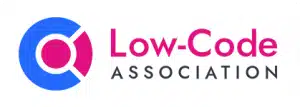What is a Custom UI for User Task?
The purpose of a custom frontend is to provide an intuitive and user-friendly interface that guides users through the task, captures relevant information, and allows them to interact with the simplifier workflow engine. The frontend can be implemented with simplifier application editor that provides easy visual creation with no and low-code tooling.
Instead of using the auto-generated user task default model, the creation of custom modules allows a lot more functionality like I
- integrating external data sources via connectors and business objects
- provide additional visualizations for e.g. display graphs and KPI card
- add more functionality to process the task like KI Services or mobile actions like barcode scanning
Creation of a Custom Frontend / UI for User Task
In the following documentation a video guides the app builder due the process of custom frontend creation
Important Business Objects for User Task Handling
The following Business Objects are needed for proper data exchange with the simplifier workflow engine
| Business Object | Function | Description |
| SF_WF_UserTask |
LoadUserTask
|
Loads the current Task Metadata and Variables by using the Task ID |
| SF_WF_UserTask |
SubmitUserTask
|
Submit the processed variables and set the final outcome to complete the user task |
| SF_WF_UserTask |
DraftUserTask
|
Saves a draft of the task and the current values already set |
| SF_WF_UserTask |
ClaimUserTask
|
Set the current logged-in User as Assignee |
| SF_WF_UserTask |
FilterSubmitVariables
|
Filter out variables that are not assigned in the workflow model / design to the user task |
Custom Module Assignment
After a custom module is created, it has to be assigned to the corresponding user task.
Best-Pratices
The following best-practices should be considered by building custom frontends:











